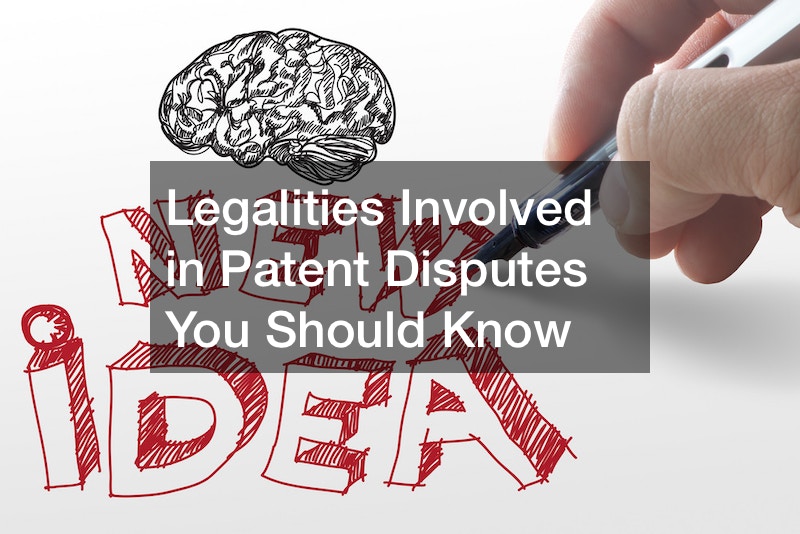
In the ever-evolving landscape of patent disputes, patents play a pivotal role in protecting innovations and inventions. However, as new ideas emerge and technologies advance, disputes over patent rights have become a common occurrence. Intellectual property disputes are complex legal matters that involve various legalities, regulations, and intricacies.
This article delves into the key legal aspects surrounding intellectual property disputes, shedding light on the complexities and considerations that arise in such cases.
Patent Disputes Basics and Infringement
A patent is designed to grant its holder only rights to make, use, sell, and license an invention for a period typically more or less 20 years from the filing date. Intellectual property disputes arise when a third party believes that another entity is infringing and violating the laws of intellectual property upon its patented invention. Intellectual property infringement occurs when someone, without authorization, uses, makes, sells, or imports an invention already patented.
To prove infringement, the patent holder must demonstrate that the accused party’s product or process falls within the scope of the claims defined in their patent.
Legal Proceedings
Intellectual property disputes can be resolved through various legal channels, including negotiation, mediation, arbitration, or litigation. Negotiation and mediation offer a more amicable and cost-effective approach, allowing parties to discuss their differences and similarities and potentially reach a settlement. If these methods fail, litigation becomes the next step, involving legal proceedings in a court of law.
Intellectual property litigation often involves multiple stages, including pre-trial activities, discovery of evidence, hearings, and a trial where both parties present their arguments and evidence.
Validity Challenges
A key legal aspect of intellectual property disputes is the challenge to the validity of the patent itself. An accused infringer may contest the patent’s validity by arguing that the invention lacks novelty, is obvious, or is not adequately described in the patent application. This can lead to complex legal battles where expert testimony and thorough analysis of prior art are essential to determining the patent’s validity.
Defenses Against Infringement Claims
Entities accused of intellectual property infringement can assert various defenses to counter the allegations. These defenses include claiming non-infringement by arguing that their product or process does not fall within the scope of the patent claims. Another defense is challenging the patent’s validity, as was previously mentioned in the earlier sections of this article.
Additionally, the accused party might argue that they had prior knowledge of the patented technology or that the patent holder engaged in inequitable conduct during the patent application process.
International Considerations
Intellectual property disputes often extend beyond national borders due to the global nature of innovation and commerce. International treaties like the Patent Cooperation Treaty, facilitate the filing of patents in multiple countries. However, enforcing patents internationally requires navigating varying legal systems and procedures.
This complexity highlights the importance of legal professionals well-versed in international patent law to ensure effective protection and enforcement of patent rights across different jurisdictions.
Remedies and Damages
Successful intellectual property infringement claims can result in various remedies and damages for the patent holder. Remedies may include injunctive relief, where the court orders the infringing party to cease their infringing activities, and monetary damages to compensate the patent holder for the losses suffered due to infringement. Damages can be calculated based on actual losses suffered or a reasonable royalty that the infringing party would have paid if they had licensed the patented technology legally.
Strategic Considerations
Navigating intellectual property disputes involves strategic considerations for both parties. Patent holders must carefully assess the strength of their patent, the potential damages they seek, and the risk of counterclaims or challenges to the patent’s validity. Accused infringers need to evaluate the strength of their defenses, the potential costs of litigation, and the impact on their reputation and business operations.
Navigating the Legalities of Patent Disputes
Patent disputes are intricate legal matters that encompass a wide array of legalities and considerations. From establishing intellectual property infringement to challenging patent validity and exploring remedies, these disputes demand a comprehensive understanding of patent law and a strategic approach to legal proceedings. Similar to other legal procedures such as commercial litigation, contractual disputes, and dispute resolution, and as innovation continues to drive progress, the resolution of intellectual property disputes will remain crucial in maintaining a balanced intellectual property ecosystem that encourages both creativity and fair competition.
